Mental Health –Suicide Prevention
Let’s Talk Sexual Violence and Sexual Harassment
Social Media – The Good, The Bad and The Ugly
What do British Values actually mean?
WHAT EXACTLY DOES IT MEAN TO BE A VEGAN?
How can you help the homeless this winter?

November 2022 - January 2023 t2group.co.uk
edge achievers edition 53
INSIDE Inside This
Issue
What’s on around the UK?
ESDGC and Equality, Diversity & Inclusion



Health & Well-being
Safeguarding
Nov 1 All Saint’s Day 6 England v Argentina, Twickenham 8 – 20 2022 UK Snooker Championship 11 Remembrance Sunday 19 Men’s Rugby League World Cup Final 20 Men’s FIFA World Cup starts Qatar 26 England v South Africa, Twickenham Dec 18 Men’s FIFA World Cup Final 25 Christmas Day Jan 1 New Year’s Day Parade, London 8 – 15 Snooker Masters 22 Chinese New Year 25 Burns Night
Events 2022 – 2023 November 9 - 15 National Recycling Week 9 World Freedom Day 11 Remembrance Day 15 Geography Awareness week 16 International Day of Tolerance 19 World Toilet Day/International Men’s Day 25 White Ribbon Day 16 - 22 Alcohol Awareness Week 30 St Andrews Day December 1 World AIDS Day 5 World Soil Day 9 International Anti-corruption Day/ LOST and FOUND Day 10 Human Rights Day 11 International Mountain Day 18 International Migrants Day 20 International Human Solidarity Day January 4 World Braille Day 17 World Religion Day 26 Spouses Day 26 Australia Day
Events 2022 – 2023 November 1 World Vegan Day 2 Stress Awareness Day 13 World Kindness Day 14 World Diabetes Day 17 TAKE a Hike Day, World Prematurity Day 25 Flossing Day December 1 Eat a Red Apple Day/World Aids Day 3 International Day of Disabled People 10 International Human Rights Day January 2 Motivation and Inspiration Day/ Personal Trainer Awareness Day 4 Hypnotism Day 21 Women’s Healthy Weight Day 22 Celebration of Life Day
Events 2022 – 2023 Nov Movember 2022 – Men’s Health Awareness Month 2 National Stress Awareness Day 2022 7-11 Talk Money Week 2022/ International Stress Awareness Week 2022 8-14 North West Sexual Violence Awareness Week 2023 9 Social Media Kindness Day 2022 11-16 Alcohol Awareness Week 2022 13 World Kindness Day 2022 14-18 Anti Bullying Week 2022 19 International Men’s Day 2022/ Survivors of Suicide Loss Day 2022 20 Universal Children’s Day 2022 25 16 Days of Action Against Domestic Violence 2022 Dec 2 International Day for the Abolition of Slavery 2022 2-8 National Grief Awareness Week 2022 3 International Day of Persons with Disabilities 2022 8 Christmas Jumper Day 2022 10 Human Rights Day 2022 Jan 16 International World Religions Day
Social Media – The Good, The Bad and The Ugly
As human beings are largely social creatures, most of us have an intrinsic need to build connections - whether that is to build or maintain relationships such as staying in touch with family members and friends, engaging with audiences for work or business purposes or for collaboration.
According to Backlinko, an online marketing and SEO organisation, 4.48 billion people currently use social media worldwide – that is up more than double from numbers in 2015.


This equates to 56.8% of the world’s eligible population aged 13 years+. 99% of social media users accessing websites and apps do so through a mobile device, meaning these platforms are a constant feature in users lives - available anywhere and anytime.

Key Facts - Social Media in the UK
• 66% of people use social media, regardless of age
• 79% of people over the age of 13 use social media platforms
• 27% of people use social media for work purposes
• Social media users have an average of 6.9 social media platform accounts per person

Social media usage and the impact on mental health
Social media can have positive or adverse effects on our mental health. Depending on the types and strengths of connections we make, impacts on our mental health and wellbeing can be positive. Interactions can ease stress, anxiety and depression, increase selfesteem, provide comfort, make us happy and prevent loneliness. On the other hand, where we don’t have strong, positive social connections and interactions, this can negatively impact our emotional health and exacerbate mental health illness or isolate individuals, making them feel more lonely.
What are the pros and cons of using social media?
Social media has it’s uses, and as with most things, there are upsides and downsides to using the platforms that are out there.
If you are an active user of social media, it’s important to be aware of the dangers and pitfalls just as much as being able to take advantages of the benefits it can provide – here are some of the pros and cons:

The Good
• Communicate and stay up to date with family and friends around the world.
• Find new friends and communities; network with other people who share similar interests or ambitions.
• Join or promote worthwhile causes; raise awareness on important issues.
• Seek or offer emotional support during tough times.
• Find vital social connection if you live in a remote area, for example, or have limited independence, social anxiety, or are part of a marginalised group.
• Find an outlet for your creativity and selfexpression.
• Discover (with care) sources of valuable information and learning.
The Bad
• Inadequacy about your life or appearance - Life online can often seem perfect…. Remember those #filters, not everything is as perfect as it appears!
• Fear of missing out (FOMO) - Everything moves so fast online and everyone knows everyone else’s business. The fear of not being up with the latest gossip or events can lead to compulsive checking of social media
• Isolation - Studies have shown that high usage of social media platforms such as Facebook, Snapchat and Instagram actually increases feelings of loneliness
• Depression and anxiety- Prioritising social media interactions over face to face relationships can increase the risk of developing or exacerbating mental health illness.
• Self-absorption - Sharing endless selfies and all your innermost thoughts on social media can create an unhealthy selfcenteredness and distance you from reallife connections
The Ugly
• Cyberbullying - Social media platforms such as Twitter can be hotspots for spreading hurtful rumours, lies, and abuse that can leave lasting emotional scars.
• Online grooming - Social media platforms are prime hunting grounds for sexual predators who look to lure children and others who may be vulnerable into sexual exploitation.
• Radicalisation - Extremist and violently extreme organisations actively use social media to identify, target and radicalise children and other vulnerable individuals.
You can get advice on safely using online technologies and social media platforms from Internet Matters and thinkuknow.
Social Media Spiral
Unhealthy use of social media can become a downward spiral
1. When you feel lonely, depressed, anxious, or stressed, you use social media more often—as a way to relieve boredom or feel connected to others.
2. Using social media more often, though, increases FOMO and feelings of inadequacy, dissatisfaction, and isolation.
3. In turn, these feelings negatively affect your mood and worsen symptoms of depression, anxiety, and stress.
4. These worsening symptoms cause you to use social media even more, and so the downward spiral continues.
3
1 2 4
If you feel that your social media usage is having a negative impact on your mental health and wellbeing, try considering the following:
Reduce time online
- Use an app to track how long you spend on social media

- Set a goal for how much you want to reduce it by
- Don’t bring your phone or tablet to bed
- Disable social media notifications
- Limit the amount of checks you do
- Do a social media detox – remove your apps from your phone
Express gratitude
- Take time for reflection
- Practice mindfulness
Change your focus
- Focus on what you have, not what you don’t have
- What purpose do you have for using social media?if it’s just boredom or you just scroll through without interacting? Consider going to the gym, going for a walk, reading a book or take up a new hobby
Spend more time – in person – with friends
- Set time aside each week to visit friends or family
- Join a club
- Exercise with a friend or group
- Become a volunteer
If you have any safeguarding concerns about the use of social media or other online technologies please contact the safeguarding team on safeguarding@t2group.co.uk
What does it mean to be vegan?
A vegan in the most basic sense is someone who doesn’t eat or drink animal products. They make sure that all the food they buy/consume is ‘plant based’, and does not have ingredients such as meat, dairy or eggs.
Sometimes the non-vegan ingredients are not obvious, such as ‘cochineal extract’, also known as ‘E120’ or ‘carmine’, which is made from crushed up beetles. And sometimes things that you would expect to be vegan contain animal products. For example, many dried herbs have milk powder as an ingredient.
There is also the fact that some food, whilst it has vegan ingredients, has non-vegan processes. Some beers and wines are strained through fish bones to get rid of the impurities. Some cereals and fruit juices say they are fortified with vitamin D and omega-3, which are sometimes made from sheep’s wool grease and fish respectively. Bananas are sometimes sprayed with chitosan, derived form crab and shrimp shells, to extend their shelf life. Some white sugars, especially icing sugar, aren’t vegan as they’re filtered using bone char.
Definitions of Vegetarian, pescetarian and vegan:
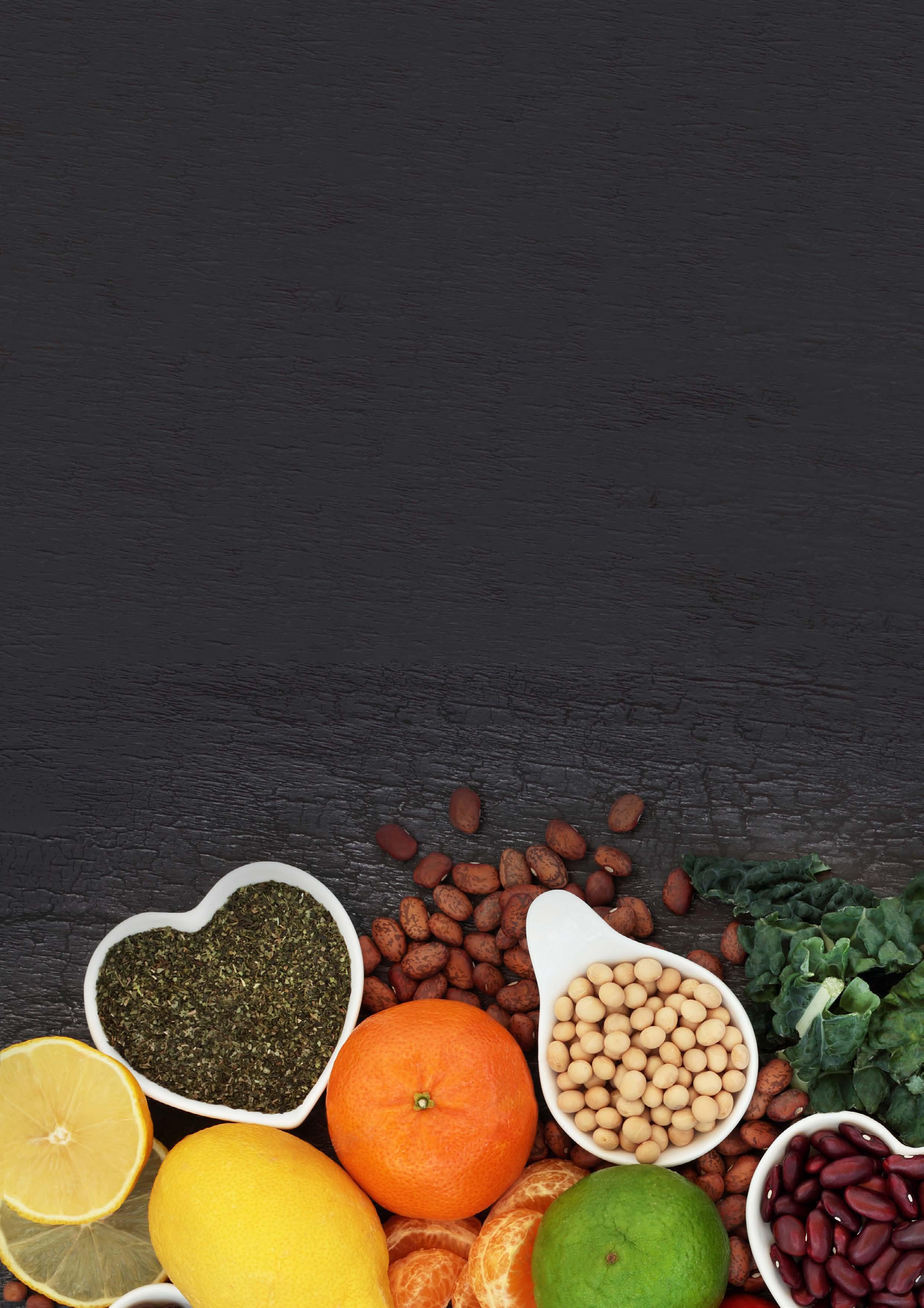
Vegetarian: People who abstain from the consumption of meat, fish and poultry, and anything that involves eating the animal itself.
Pescetarian: Like vegetarian, except they will eat fish and other sea food.
Vegan: Does not eat any animals or animal products.
There are also a surprising number of non-food products that sometimes contain animal products, for example:
• Shampoos and Conditioners – lecithin from animal or dairy sources
• Medication – gelatine (made from animal bones) coating
• Fabric Softener – tallow (Animal fat)
• Fireworks – stearic acid, which is derived from animal fat
• Crayons – beef fat
• Tyres – stearic acid, which is derived from animal fat
With so many of our everyday items containing animal products, why do people bother going vegan?
There are five main reasons people decide to become vegan:
Ethics – Some people believe it is unethical to eat animals and animal products, because of the killing and mistreatment of animals that happens as a result.
The Environment – Some people decided to go vegan due to the negative environmental impact of intensive animal farming – the livestock industry produces around 18% of global greenhouse gas emissions, and one kilogram of beef requires 25kg of grain and 15,000 litres of water.
Health – Veganism can have health benefits, such as weight loss, lower risk of heart disease, and a reduced risk of diabetes or to manage existing blood sugar issues. Veganism does also make it harder to get some essential nutrients such as certain proteins, vitamin B12, or omega 3, and has been reported to lead to lower bone density. Some people also become vegans due to allergies and intolerances, for example they may be ethically vegetarian but have a dairy intolerance.

Religion – Some people’s religious beliefs lead them to become vegans. Followers of Jainism, an ancient Indian religion, believe that ‘non-violence is one’s highest religious duty’, which compels them to follow a ‘non-violent’ (vegan) diet. Most Hindus are vegetarian due to their strong beliefs around non-injury and compassion, with some being influenced by their beliefs to take it a step further and become vegan. Some schools of Buddhism follow a vegan diet, some Jews concerned with Kosher practices become vegetarian or vegan, and some Christians also decide to take up a vegan or vegetarian diet for lent. Remember though, some religious people decide to become vegans for reasons outside of their religion, usually tied to one of the other reasons discussed.
Preference – For some people it is simply a case of preference. Some people don’t like the texture of meat and some animal products, and may find it easier to describe themselves as vegan rather than explain their preferences.
Some people also become vegan temporarily, either as part of a challenge such as Veganuary, or even to raise money for charity.
The Grey Areas
There are a lot of grey areas within veganism. For example, some vegans believe honey is vegan, and others don’t. There are also differences in how strictly people follow the vegan diet. Some people are ‘flexivegan’ – vegan most of the time, usually for environmental reasons, but sometimes they buy or eat something with animal products in because they fancy it. For some people, food waste trumps veganism, so they would eat something non-vegan if it would go to waste otherwise. For others, their compromise is a necessity – their medication isn’t vegan, but they need it to live. At the other end of the scale, there are people for whom veganism is so ingrained in their beliefs and identity that they follow a vegan lifestyle as strictly as they can.


What are the down sides?
Nutrition
As mentioned already, a vegan diet makes it harder to get nutrients like calcium, omega 3, and B12. This can lead to decreased bone density, higher cholesterol, and anaemia. It can also be harder to get enough protein, especially if doing a lot of sport or activity, where protein requirements are higher.
Medication interaction
Some medications, such as Warfarin, can have strong reactions with leafy greens like kale and spinach, which may be more prominent in a vegan diet. Things like soy milk or seaweed can also decrease the effectiveness of Warfarin.
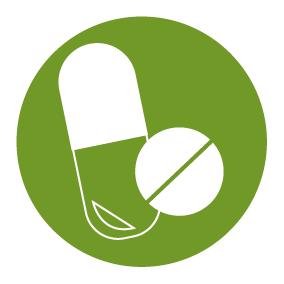
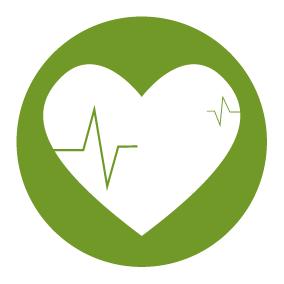
It’s hard work!

Everything seems to have animal products or processes involved, often meaning lots of research is needed.
Eating out & socialising
Eating out can be harder, as not all restaurants and cafes have vegan options – or, they might have one, but not everyone wants to eat the same thing every time they go out. It also might make it harder to go over to friends houses for dinner, if they are not also vegan, as not
everyone knows how to prepare vegan food.
Cooking vegan

It can be hard to learn how to make all of your favourite meals vegan, and it’s even harder if you enjoy baking – how do you make a cake with no butter or eggs? (and your sugar may not be vegan either!)
Cost
A vegan diet can be more expensive, especially if you buy meat substitutes like vegan bacon or vegan fish. Additionally, when replacing non vegan items such as leather shoes or toiletries, the cost can be higher.
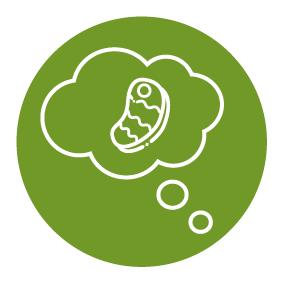



Judgement
Sometimes, when telling someone you’ve gone vegan, they become an expert in nutrition and start grilling you about how you will get enough nutrition in your diet. And let’s face it, there are also only so many ‘rabbit food’ jokes one person can take.
Cravings
If someone’s gone vegan or ethical or environmental reasons, they still may like and miss the taste of meat and animal products.
Whatever your beliefs and choices, everyone can agree that the important thing is to respect other people’s decisions when it comes to their own diets and lifestyles.
How can you help the homeless this winter?

As winter looms, it seems the weather is getting colder (and more extreme) with each passing day.
Major storms and cold, snowy spells can prove a challenge for anyone – even from the comfort of their own home. But for homeless people, and those sleeping rough on the streets, it’s an unimaginable, impossible time – during which, their health is more at risk than any other time of year. And this only gets worse over the Christmas period, when the cold weather and the isolation of being alone on the streets during the festive season can make things even more unbearable.
If you see someone sleeping rough and are concerned about their welfare, it’s important to seek help – here’s how you can do so, both during Christmas and the winter.
How you can help homeless people when it’s cold
If you’re in England or Wales, the best thing to do if you see someone who is sleeping rough is contact Streetlink - https://www.streetlink.org.uk/
Essentially, this allows you to send an alert to a local outreach service – such as your Local Authority or a homeless charity, such as St Mungo’s - https://www.mungos.org/ homelessness/help-someone-else/
They will then be able to locate the person sleeping rough to make sure they know about the support available to them. You’ll need to provide the exact location of the person you’re worried about by describing the area, as well as pinpointing it on a map – plus what time of day you saw or interacted with them.
You’ll also need to provide a description of their appearance, name, age (if possible) and other identifying characteristics – to help the outreach service identify them. If you need to make contact now, send your Streetlink alert via their website. Or call 0300 500 0914. This advice only applies to adults. If the person appears to be under 18, you should contact the police instead.
Call 999 in an emergency if you believe someone needs immediate medical attention. Finally, you can contact your local council to make a report or ensure that someone you’ve spotted locally is getting support. Find the best contact number or email address on gov.uk.
Many local authorities and charities operate a Severe Weather Emergency Protocol (SWEP). Created by charity Homeless Link, the protocol aims to get people off the streets and into emergency accommodation, which can help prevent deaths during extreme weather. So, they should have a plan in place to provide assistance to local homeless people.
Other ways to help the homeless this winter
If you want to do your part in tackling homelessness in the long term, there are other ways to help during winter –and throughout the year.

Donate coats and blankets
Got a coat you never wear? Donate them to a charity like Wrap Up UK.

Not in your area? Find your local homeless shelter, or a similar service, via Homeless Link, or visit the Salvation Army clothing bank to see what they currently need. Likewise, blankets, sleeping bags and warm clothing are much-needed donations.
Offer warm drinks/food

If you want to offer something to a rough sleeper directly, you can always ask if they would like anything to eat or drink.
Speak to them first to ensure it’s something they want or need, and Shelter also says it’s okay to provide blankets, or warm clothing – as long as you’re sure it’s Covid-safe.

If you can’t offer anything, you can always offer a friendly hello, check they’re alright and contact Streetlink.




Mental Health –Suicide Prevention
Suicide is the single biggest killer of men under the age of 45 in the country, but suicides among teenage girls and young women have almost doubled in recent years.
This article provides an overview of suicide, highlight the facts and common misconceptions around suicide, and signpost you to support and educational resources available.
What is Suicide
Suicide is when someone ends their own life. It’s a very tragic response to difficult situations and feelings. Perhaps most tragic because it is preventable. Thousands of people in the UK end their lives by suicide each year, one in five of us think about suicide in our lifetimes.
Having suicidal thoughts doesn’t mean that someone has a mental illness, but there is a connection between mental ill health and suicidal thoughts.

Suicidal thoughts and feelings can be complex, frightening, confusing and lonely. Learning about the possible risk factors linked to suicidal thoughts, along with how it can be prevented, may help you save a life. This may be someone else’s, or it may be your own life.
Risk factors
There is no single reason why people die by suicide. People think of suicide for many different reasons. Sociological, economical, psychological and genetic factors can contribute to a person being at greater risk of suicide. A risk factor might include:
difficult life event (such as a traumatic childhood or experiencing physical or emotional abuse)
something upsetting or life changing such as a relationship ending or a loved one dying
misusing drugs or alcohol
living alone or having little social contact with other people
having a mental health condition such as depression self-harming
having a physical health condition, especially if this causes pain or serious disability
problems with work or money
being a young person, or being a middle-aged man
What to say to someone who may be at risk of suicide
If you think that someone may be feeling suicidal, encourage them to talk about how they are feeling. You may feel uncomfortable talking about suicidal feelings. You may not know what to say. This is entirely normal and understandable.
It might help to:
• Let them know that you care about them and that they are not alone
• Empathise with them – you could say something like, “I can’t imagine how painful this is for you, but I would like to try to understand”
• Be non-judgemental and don’t criticise or blame them
• Repeat their words back to them in your own words – this shows that you are listening, and repeating information can also make sure that you’ve understood them properly
• Ask about their reasons for living and dying and listen to their answers – try to explore their reasons for living in more detail
• Ask if they have felt like this before and if so, ask how their feelings changed last time

• Reassure them that they will not feel this way forever
• Encourage them to focus on getting through the day rather than focussing on the future
• Encourage them to seek help that they are comfortable with such as help from a doctor or counsellor, or support through a charity such as the Samaritans
• Follow up any commitments that you agree to
• Make sure someone is with them if they are in immediate danger
• Try to get professional help for the person feeling suicidal
• Get support for yourself
Remember that you don’t need to find an answer, or even to completely understand why they feel the way they do. Listening to what they have to say will at least let them know you care.
If you’re not sure that someone is feeling suicidal, ask:
“Are you thinking about suicide?”
“Are you having thoughts of ending your life?”
These questions are direct. It is better to address the person’s feelings directly rather than avoiding the issue. Remember that asking about suicide won’t make it more likely to happen.
Warning signs that someone may be at risk of suicide
A change in someone’s personality and behaviour might be a sign that they are having suicidal thoughts. You may be the best judge of when someone you know is behaving differently. Changes can include:
• Becoming anxious
• Being more irritable
• Being more confrontational
• Becoming quiet

• Having mood swings
• Acting recklessly
• Sleeping too much or too little
• Not wanting to be around other people
• Avoiding contact with friends and family
• Having different problems with work or studies
• Saying negative things about themselves
There are some indicators that suggest someone is more likely to attempt suicide. These include:
• Threatening to hurt or kill themselves
• Talking or writing about death, dying or suicide
• Thanking you, or saying sorry to you for no apparent reason
• Preparing to end their life, such as storing up medication
Signs that something is wrong can sometimes be more difficult to spot. Such as a cheeriness which may seem fake to you. Or they may joke about their emotions. Such as saying something quite alarming that is disguised as a joke.
Don’t ignore your gut feeling if you are concerned about someone. Some people won’t be open about how they are feeling. A lot of people try to seek help before attempting suicide by telling other people about their feelings. This could be a professional, friend or family member.
If someone tells you about how they are feeling don’t ignore them.
• Putting affairs in order such as giving away belongings or making a will
• Sudden calmness - the person suddenly becomes calm after a period of depression or moodiness
What to do if you are at risk of suicide

If you’re experiencing suicidal thoughts, seek professional support. Contact your:
• GP and ask for an emergency appointment
• Local urgent mental health helpline (numbers for England, Wales, Scotland and Northern Ireland can be found here)

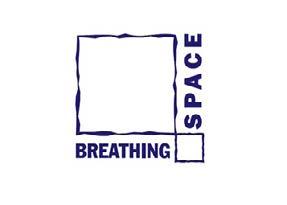



• Local NHS 111 service



It can be hard to know what to say and how to support somebody who is experiencing suicidal thoughts. This guide looks at why someone might think about suicide and how you can help them. It also looks at support for you

It can be hard to know just how to start a conversation about suicide. That’s why Mental Health UK have created this downloadable resource to support you in spotting the warning signs that someone might need help, broaching the topic and giving you tips on what you can do and where you can signpost people to for further help

UK Helplines All numbers listed below are operated 24 hours a day If you live in England If you live in Wales If you live in Scotland If you live in Northern Ireland NHS 111 NHS Direct 0845 46 47 NHS 24 111 Lifeline 0808 808 8000 Samaritans 116123 Samaritans Wales English: 116123 Cymraeg: 0808 164 0123 Breathing Space 0800 83 85 87 Samaritans 116123
What do British Values actually mean?
Britain has changed drastically over the last 100 years; socially, economically and culturally. British Values underpin what it is to be a citizen in a modern and diverse Great Britain, valuing our community and celebrating diversity of the UK. They can be used to find common values amongst many different types of groups and individuals.

People often confuse ‘values’ with ‘stereotypes’ when discussing what British Values are.
What are stereotypes?
Stereotypes are generalised beliefs about a particular category of people. They can be formed during our upbringing when we take on the views of family and friends, or from our own experiences. Stereotypes are expectations that people might have about every person of a particular group. The type of expectation can vary and it can include preconceptions about the group’s personality, preferences, or ability.
Some stereotypes about British Values include:
• Being polite
• Eating fish and chips
• Having a monarchy
• Queuing
• Drinking cups of tea
• Talking about the weather
• Roast Dinners on a Sunday
What are values?
Values are principles or standards of behaviour. Individuals make judgements on what is important in life, and this informs the way they behave and treat others.
What are the four fundamental British Values?
The 4 recognised British Values are:
• Democracy
• The Rule of Law
• Individual liberty
• Mutual respect and tolerance for those with different beliefs and faiths, including those with no faith
How do British Values relate to me?
Democracy
Definition: A culture built upon freedom and equality, where everyone is aware of their rights and responsibilities. People are able to freely express their opinions.
How does this relate to my everyday home and work life?
• The right to vote in local and general elections and referenda

• The right to protest and petition
• Team meetings – agreeing objectives and goals
• Joint decision making
• Gathering feedback e.g. through surveys
Rule of Law
Definition: The framework that supports the equality of all citizens before the law; the need for rules preventing the unreasoned use of power whilst allowing people to live and work in safe and secure environments.
How does this relate to my everyday home and work life?
• Legislation – e.g. Driver’s Licence, health and safety, criminal law
• Codes of conduct within work or groups we are members of
• Policies and procedures in the workplace
• How we conduct ourselves in our daily lives
Individual Liberty
Definition: Individual liberty means each of us having the freedom to make our own choices and do what we want – within reason. As long as we respect the other three British Values and the rights of others, then we are free to pursue our ambitions, and follow our own volition. (theday.co.uk)
How does this relate to my everyday home and work life?
• Equality and Human Rights
• Personal development plans
• Career and life choices e.g. jobs we carry out or what faith or religion we choose to practice
• Consent, individuality and personality – what we do, how we do it e.g. how we dress, social media activity
Mutual Respect and Tolerance
Definition: Mutual respect is understanding that we all don’t share the same beliefs and values. Respecting the values, ideas and beliefs of others whilst not imposing our own on others.
How does this relate to my everyday home and work life?
• How we interact with people who hold different views to our own
• Workplace policies such as Equality, Diversity and Inclusion
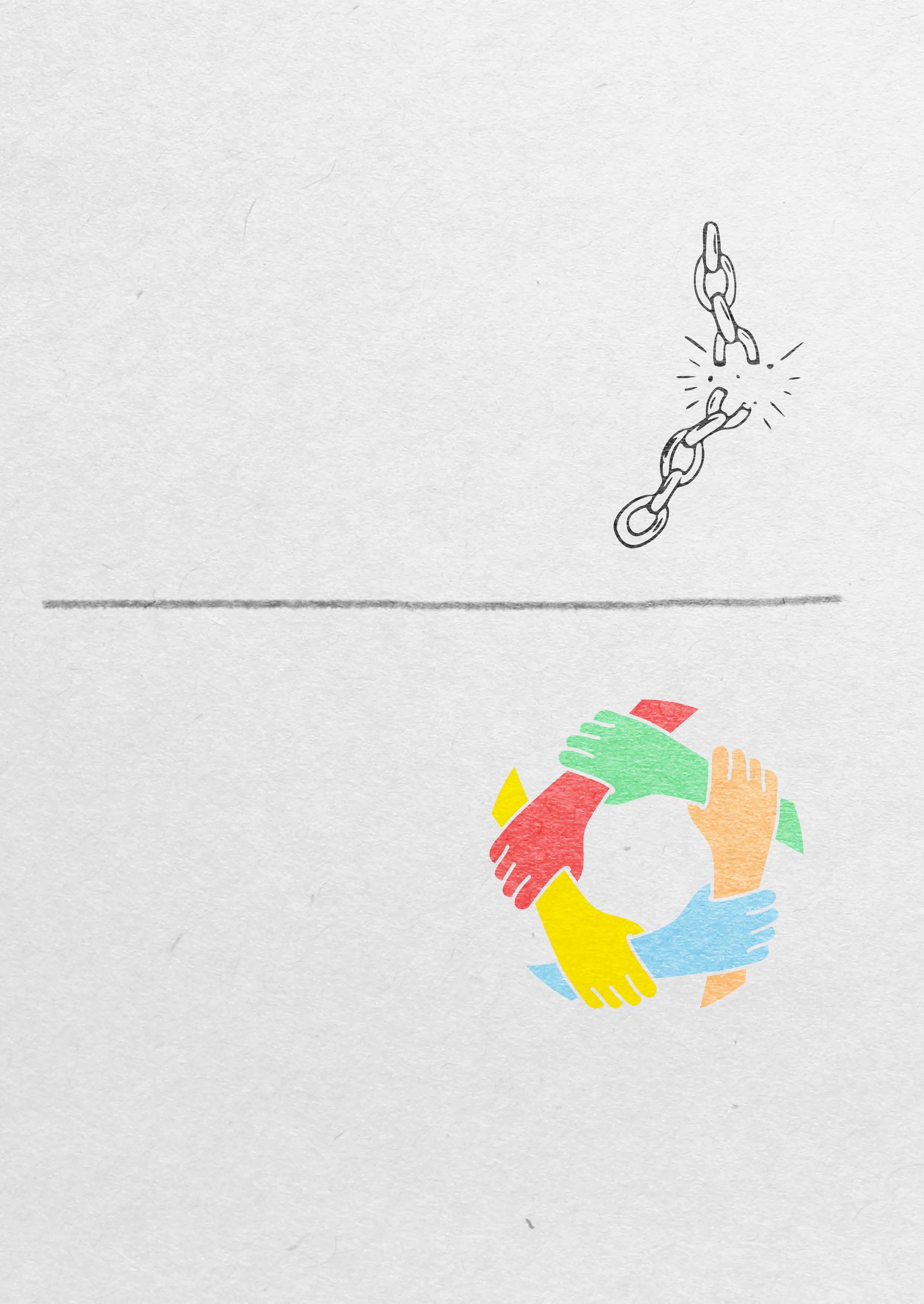
• Recognising stereotypes in ourselves and others and challenging these views appropriately
• Celebrating religious and cultural events and festivals
• Embracing diversity such as:
Race
Culture
National origin
Region
Gender
Sexual
Orientation
Politics
Religion
Ethnicity
Disability
Family structure
Health
Marital Status
Values and beliefs
Socio-economic differences
Age
How do British Values fit in with the Prevent strategy?
The Prevent strategy is all about raising the awareness of radicalisation and extremism and preventing young and vulnerable individuals being drawn into violent extremism and terrorism.
By integrating the British Values into our daily lives, we will encourage tolerance of other cultures, religions and beliefs (whatever they may represent). Being tolerant and allowing people to express those views and opinions in a more appropriate way will mean individuals are less likely to take a violent or extremist approach.
Extremism can be defined as any view that vocally or actively opposes the fundamental British Values. Further information can be found on the Learner Support section of the website www.t2group.co.uk including:
eLearning module ‘What are British Values?’

eLearning module ‘Radicalisation’
Guide – ‘Radicalisation and Preventing Extremism’
IF YOU HAVE ANY CONCERNS ABOUT RADICALISATION AND EXTREMISM OR ANYTHING RELATED TO FUNDAMENTAL BRITISH VALUES, YOU CAN CONTACT THE SAFEGUARDING TEAM VIA safeguarding@t2group.co.uk FOR HELP AND SUPPORT.
Safeguarding and Prevent Lead: Stacy Preston 02920 799 133 / 07876 824 157 stacy.preston@t2group.co.uk
Deputy Safeguarding and Prevent Lead: Lisa Sheppard 02920 799 133 / 07881 093 484 lisa.sheppard@t2group.co.uk


Let’s Talk Sexual Violence and Sexual Harassment

Firstly, I just want to start by giving a content warning. Some of the topics and facts we explore in this article may well be similar to situations that you have been affected by – either directly yourselves, or indirectly through family members, friends or colleagues. If you find the content too challenging, make sure you take 5 and remove yourself from the article or associated videos. If you need to reach out to someone, please contact one of our Safeguarding Team – our details can be found here.
Sexual violence and sexual harassment can be difficult topics to discuss, but if we are to raise awareness and promote support for survivors of these issues then it’s so important to start the conversation. There has been a lot of recent activity in the media via TV ads and social media posts to ensure that people know that sexual violence and harassment are not acceptable and what they can do if they see it happening.
Click the image on the left to watch a short video
Before we can tackle sexual violence and harassment, its important to understand what it is – what you might see, hear or experience.
What is sexual violence?
Sexual violence is a term we use to describe any kind of sexual activity or act that was unwanted or happened without consent. This includes sexual assault and abuse and can often involve coercion. Sexual violence can be perpetrated by strangers, acquaintances, family members and trusted individuals.
STATS ON SEXUAL ASSAULT
70,330 RAPES WERE RECORDED BY POLICE IN THE YEAR ENDING MARCH 2022 THIS IS THE HIGHEST EVER RECORDED. CHARGES WERE BROUGHT IN JUST 2,223 CASES
98% OF ADULTS PROSECUTED FOR SEXUAL OFFENCES ARE MEN
1 IN 4 WOMEN 1 IN 20 MEN HAVE BEEN RAPED OR SEXUALLY ASSAULTED AS AN ADULT
1 IN 6 CHILDREN HAVE BEEN SEXUALLY ABUSED
1 2 RAPES AGAINST WOMEN ARE CARRIED OUT BY THEIR PARTNER OR EX-PARTNER
5 MILLION WOMEN IN ENGLAND AND WALES HAVE BEEN RAPED OR SEXUALLY ASSAULTED SINCE THE AGE OF 16
5 IN 6 RAPES AGAINST WOMEN ARE CARRIED OUT BY SOMEONE THEY KNOW
5 IN 6 WOMEN/4 IN 5 MEN WHO ARE RAPED DON’T REPORT IT TO THE POLICE
WHY?
40% “EMBARRASSMENT”
38% DIDN’T THINK THE POLICE COULD HELP
34% THOUGHT IT WOULD BE HUMILIATING
1 2 ADULT SURVIVORS OF RAPE HAVE EXPERIENCED IT MORE THAN ONCE
1 3 ADULT SURVIVORS OF RAPE EXPERIENCE IT IN THEIR OWN HOME
(Source: Charity and support organisa�on, Rape Crisis)
What is sexual harassment?
According to Victim Support, sexual harassment is any kind of unwanted behaviour of a sexual nature that makes you feel humiliated or intimidated, or that creates a hostile environment. It is a type of sexual violence and can include unwelcome sexual advances, requests for sexual favours, and other verbal or physical harassment of a sexual nature. This can happen within or outside of the workplace.
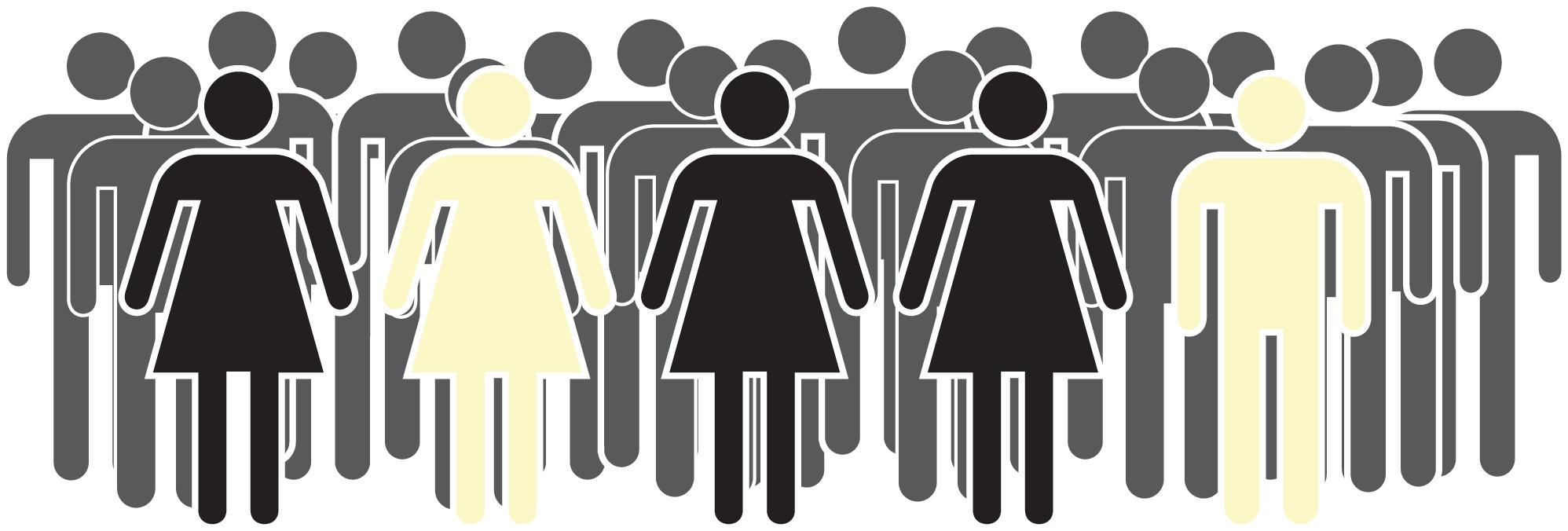
Some key numbers and facts regarding sexual harassment are:
• 97% of women aged 18-24 have been sexually harassed (UN Women UK)
• 96% of women don’t report sexual harassment because of the belief that it would not change anything (YouGov)
• Researchers further reveal that people who were groped, followed and pressured into sexual activity did not find their experience to be “serious enough” to report (YouGov)
• 9 in 10 girls and young women in schools say sexist name-calling and being sent unwanted ‘d**k pics’ or other images of a sexual nature happens to them or other girls and young women their age (Ofsted)

97% 96% 9/10
Watch our video here on sexual harassment to find helpful guidance on what to do if you experience or witness sexual harassment in the workplace and where to access support.
After reading these facts and figures about sexual violence and sexual harassment, it really brings home the size of the issue and the need for us to bring it out in the open, call it out for what it is and tackle it together. Let’s talk –although this can be an uncomfortable subject to discuss, raising awareness may not only help you, but it can also help us safeguard ourselves, family and friends and even strangers - now and in the future!

Where can I get help and support?
Whether you have experienced sexual violence or harassment in the past or it is happening to you right now, or if you know of someone else who could benefit from support – there are people and organisations out there that offer the support you need. Here are a few and remember that you can always talk to your Tutor or Coach or contact a member of the Safeguarding Team.
Find your nearest sexual assault referral centre (SARC)
Sexual assault referral centres (SARCs) offer medical, practical and emotional support to anyone who has been raped sexually assaulted or abused. They have specially trained doctors, nurses and support workers to care for you. Help is available 24 hours a day.
Other places you can get help include:
• a doctor or practice nurse at your GP surgery
• a voluntary organisation, such as Rape Crisis, Women’s Aid, Victim Support, The Survivors Trust or Male Survivors Partnership
• the 24-hour freephone National Domestic Abuse Helpline, run by Refuge, on 0808 2000 247

• the Rape Crisis national freephone helpline on 0808 802 9999 (12 to 2.30pm and 7 to 9.30pm every day of the year)
• a hospital accident and emergency (A&E) department
• call NHS 111 or get help from 111 online
• the police, or dial 101
• in an emergency, dial 999
NAPAC (the National Association for People Abused in Childhood) offers support to adult survivors of all types of childhood abuse, including physical, sexual, emotional abuse or neglect. Access the napac website here.
0808
801 0331
Need to talk? Call napac’s support line, free from landlines or mobiles. Calls will not show on your bill
IF YOU HAVE ANY CONCERNS ABOUT SEXUAL VIOLENCE AND SEXUAL HARRASSMENT, YOU CAN SPEAK TO YOUR TUTOR OR COACH OR CONTACT THE SAFEGUARDING TEAM VIA safeguarding@t2group.co.uk FOR HELP AND SUPPORT.
Safeguarding and Prevent Lead: Stacy Preston 02920 799 133 / 07876 824 157 stacy.preston@t2group.co.uk
Deputy Safeguarding and Prevent Lead: Lisa Sheppard 02920 799 133 / 07881 093 484 lisa.sheppard@t2group.co.uk



Not happy with something? Let us know how we can improve ! We are always open to suggestions to how we can improve, let us know at info@t2group.co.uk Head Office Melrose Hall, Cypress Drive, St Mellons, Cardiff, CF3 0EG Need extra help and advice? Visit t2group.co.uk Tel: 02920 799 133 Fax: 02920 819 515 Email: info@t2group.co.uk Web: t2group.co.uk /t2apprenticeships /t2apprentice /t2group
























































